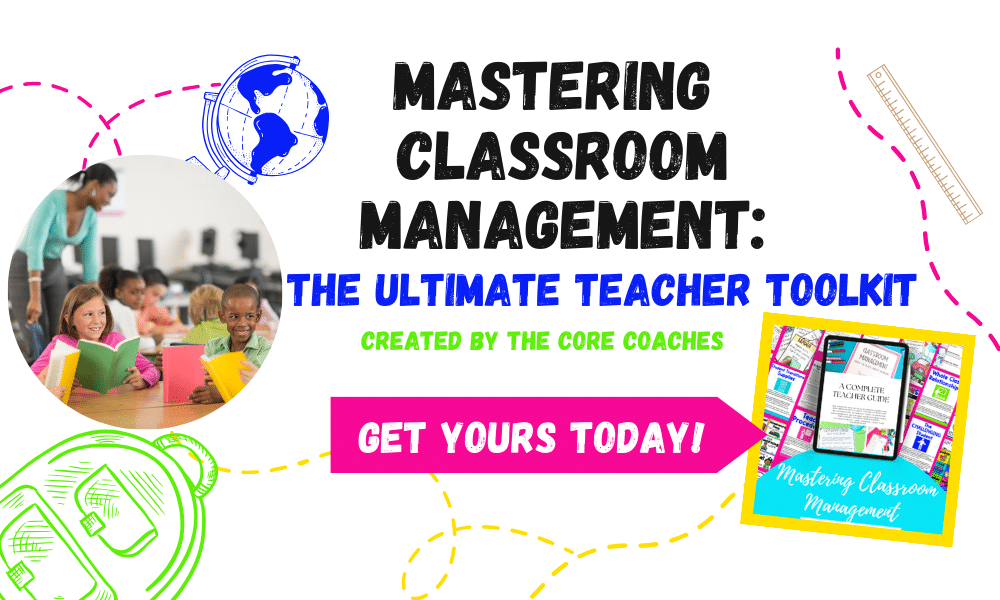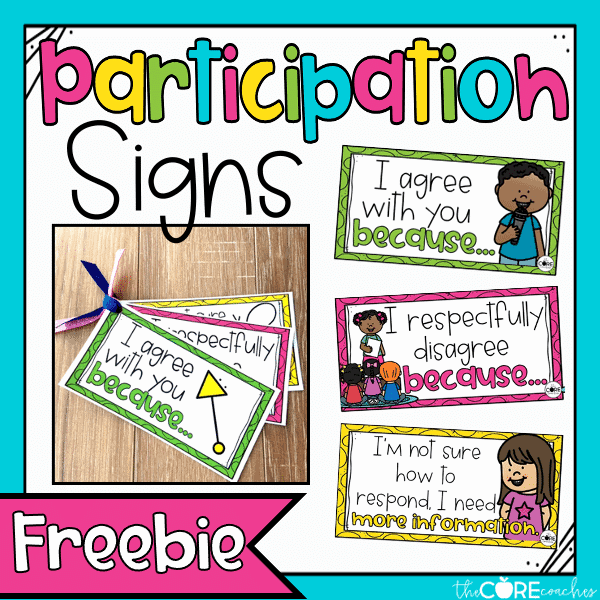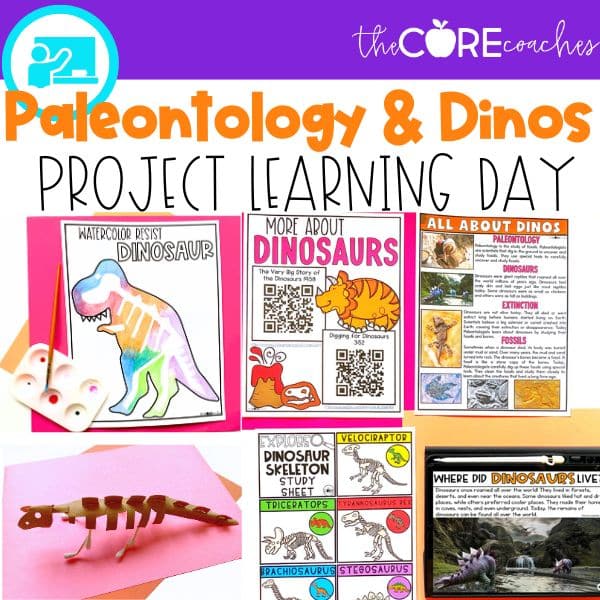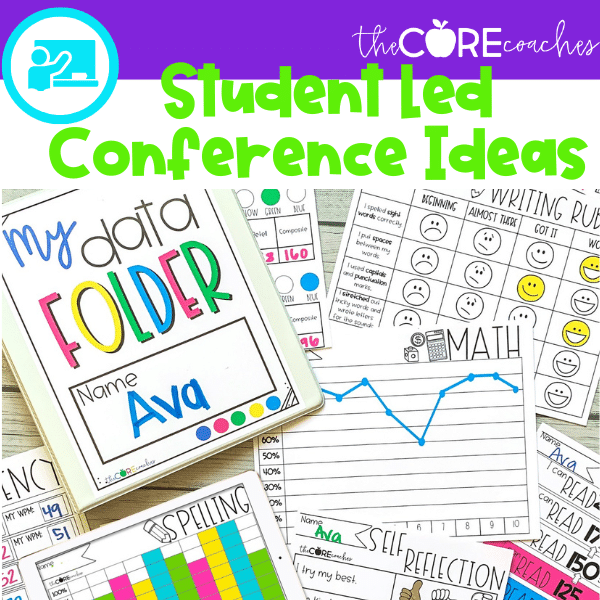Classroom Management Plans Ensure Your Success as a Teacher!
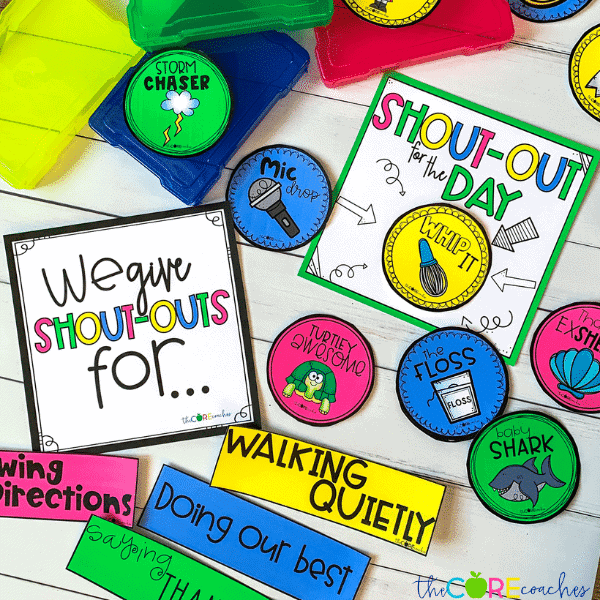
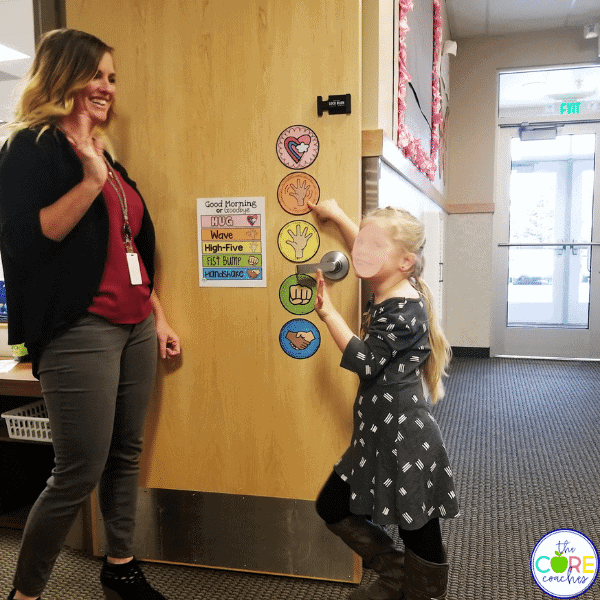
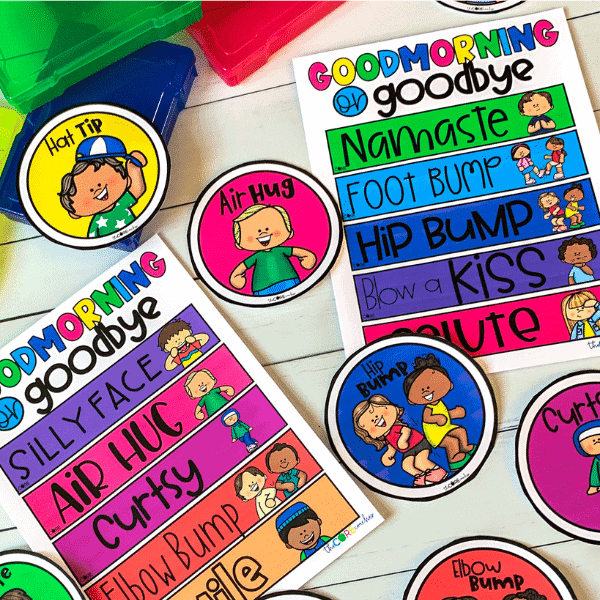
Creating a classroom management plan is probably THE MOST important thing you can do to plan for success as a teacher! What is a classroom management plan though?
When you hear the words “classroom management” you probably think of rules & procedures. Maybe even consequences and rewards. While these are all important pieces of a classroom management plan, they are not the only pieces.
With over twenty years of teaching between The Core Coaches we have A LOT of experience in classroom management. Both as teachers and coaches. As teachers, we were always learning and adapting as needed. When something worked, we would keep it. However, that didn’t mean we stopped learning and modifying our plan. Why? Because each year is a new group of students. Each year is a new dynamic in the classroom. So while some things may work with one class, it may not work with a different class. This is an important piece of effective classroom management: being adaptable.
Being adaptable doesn’t mean that every year you change your entire classroom management plan. It means that you adapt & modify your plan as needed. This is one reason why it’s important to have a clear classroom management plan setup – to have a solid starting point.
Before we get too far into the “why” though, let’s continue our discussion on the “what.”
So, What is classroom management?
We asked teachers what classroom management is, the most common answer is related to classroom rules. This makes sense, this is the most literal form of management: rules. What if the classroom rules aren’t working though?
When we step into a classroom as a coach, the first thing we ask ourselves is, “how effective is the teacher’s classroom management?”Guess what one of our last questions is though? “What are the classroom rules?!”
Classroom rules are one of the first things teachers learn about classroom management. Why are they the last thing we look for as coaches?
The main reason: rules are not necessary if other classroom management strategies are in place.
WHAT?! “Rules are not necessary?!” Did we really just say that?! YES!
This doesn’t mean we believe in throwing classroom rules out the window. It means that if you implement other practices then the rules are not (usually) necessary. What are these other practices? Keep reading to find out! Especially if you’ve ever felt like your students (or that one particular student) “never follows the rules.”
Let’s talk about what these different pieces are individually, and how together they create an effective classroom management system. By the end, you will be able to answer the question “what is a classroom management plan” with an understanding that truly helps you manage YOUR classroom more effectively!
Start Building Classroom Community
Building a positive classroom community is the backbone to establishing effective classroom management. Why? Because if you have a positive classroom community, there is less need for management techniques. This brings us back to our belief that rules are not always necessary.
How do you go about building a classroom community? There are many different ways to explore this topic. We are going to share with you the top two.
Positive relationships. Creating positive relationships within your classroom is probably the most important thing you can do to build a classroom community. There are three types of relationships that you want to consider: student-to-teacher, student-to-student, and whole class.

Taking time to intentionally establish positive relationships in these three areas greatly improves a classroom community. Improving a classroom community greatly improves the overall attention and behavior of students. These improvements naturally “manage” the classroom so that you can focus on teaching, and the students can enjoy learning.
One of the easiest & most effective ways to begin establishing relationships in all three of these areas is to focus on student names. Know your students’ names, and use them when you speak to them. Have your students use each other’s names when doing group work. When you are speaking to the whole class, reference students by their names. One simple thing, that can go a long way.
————————–
Pro Tip! A great way to help you and your students remember each others name is to use our first week of school classroom management activities that students love!————————–
Another important part of creating a classroom community is to provide clear expectations. This goes for everything from behavior to work. One of the best ways to create clear expectations is to use routines and procedures.
Routines and procedures are a common part of any teacher preparation program. Therefore, you are probably already familiar with some of these concepts. You probably already have some routines and procedures in place in your classroom. Let’s quickly explore this concept though, and look at exactly why they are important (and how they are different from rules).
CLASSROOM TRANSITIONS
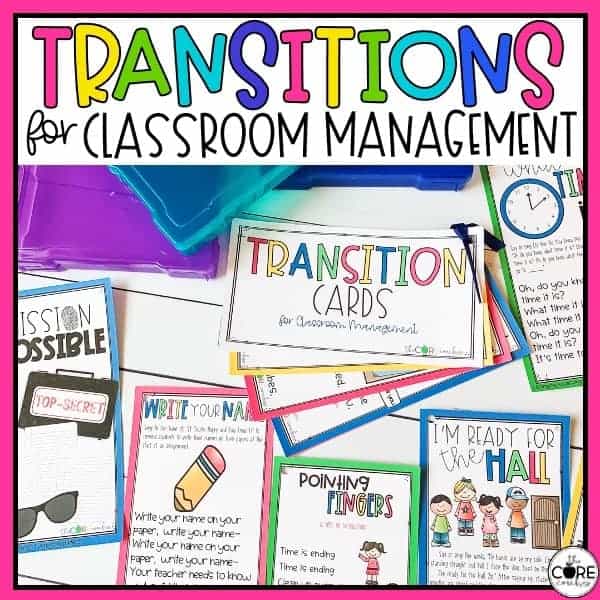
We can’t discuss the importance of routines and classroom procedures without also discussing transitions. Explicit routines and procedures tell students WHAT the expectation is and HOW to achieve it; effective transitions help them get it done in a timely manner.
Timeliness is the key to effective transitions. It is also the main difference between a routine and a transition.
Let’s think about this in the context of having students move from their desks to the carpet for reading. To make this transition effective, you would create a standard routine the students always follow to get seated on the carpet. This routine, when explicitly taught and practiced over and over again, gives students clear expectations of how to get seated for reading. Without an explicit time in which to get to the carpet though, there is still room for this transition to take much longer than needed.
The longer it takes students to move from one activity to another, the more time there is for students to get distracted. This leads to less time for teaching and learning. This is why effective transition strategies make routines more effective, which in turn makes your classroom management more effective.
A tool you may already use for transitions is a timer. We LOVE timers! Just setting a timer doesn’t create a timely transition though. To use a timer effectively, students need to interact with it.
The easiest way to help students interact with the timer is to ALWAYS project the timer on the whiteboard. To make this even more effective, add an extra incentive.
A great way to further engage students with the timer is to play “Beat the Clock.” Give students a set time to transition from one task to another. Encourage them to try and do it quicker than the allotted time. For every second left on the clock, add it to a bank. When the class reaches a certain number, they get that many seconds/minutes for free-time at the end of the week/month.
Transitions are not just for moving around the classroom. Transitions are equally important for moving between lessons.
Timers are a great tool for creating timely transitions between lessons as well. They are especially effective when combined with another strategy. A fun and effective strategy for transitioning from one lesson to the next is “Set the Table.” Give students a list of what they need on their desks for the next lesson. Give them a visual of where to place their pencil, paper, etc. on the desk.To make this more effective, tell them they can ONLY have out what is on the list. Set the timer and have them “set their table.”
There are several strategies for effective classroom transitions! Choose 2-3 that you feel are best for your classroom. Teach them to your students just like you would a routine. Then, watch as your students start moving more quickly from activity to activity!
Try new transitions in your classroom today!
CLASSROOM ROUTINES AND PROCEDURES
Sometimes it feels like routines and procedures get lumped together with classroom rules. They are actually very different though. So much so that we believe you can effectively manage a classroom without rules, but NOT without routines & procedures.
Why? Because routines & procedures provide clear expectations on HOW to do things. They tell students exactly what is expected. They also tell students HOW to meet the expectation. Setting this clear expectation with the exact steps on how to meet it, sets students up for success.
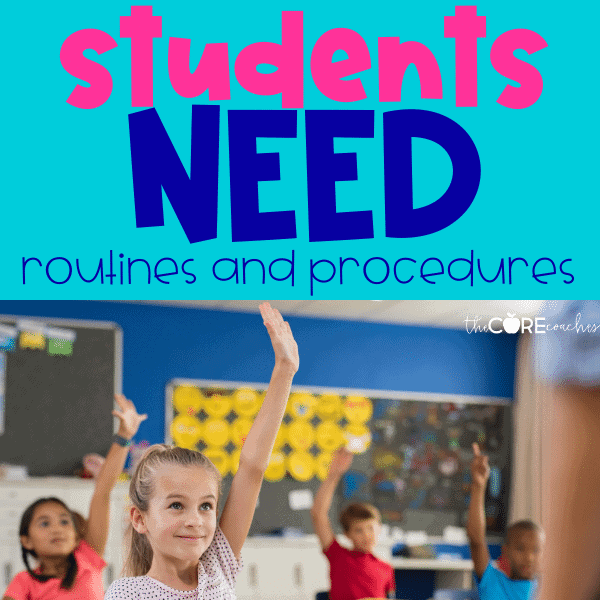
This is why it is important to clearly separate routines & procedures from rules. Rules tell students what to do (or not to do), but don’t tell them the HOW. Without understanding the how, students are more likely to not follow the rule.
Let’s look at an example. A rule may be “keep your table clean & organized.” What does that look like though? What is the teacher’s expectation of “clean & organized?’ How does the student meet this expectation? Remember, we are working with first and second graders. They need explicit directions – for everything!
A step-by-step procedure gives students steps to follow. It would provide a clear outcome.
- Put all pencils in the pencil box
- Place all papers in your folder
- Put your folder in your cubby
- Throw away any garbage
- Tuck in your chair
Providing steps like this sets your students up for success in EVERYTHING they do in your classroom. When students feel successful, they are less likely to do something that would “break a rule.” Therefore, by implementing routines & procedures you create a space where following the rules is easy.
Quick Tip: Use attention Signals to quickly get students' attention before starting a procedure.
CLASSROOM PREPARATION
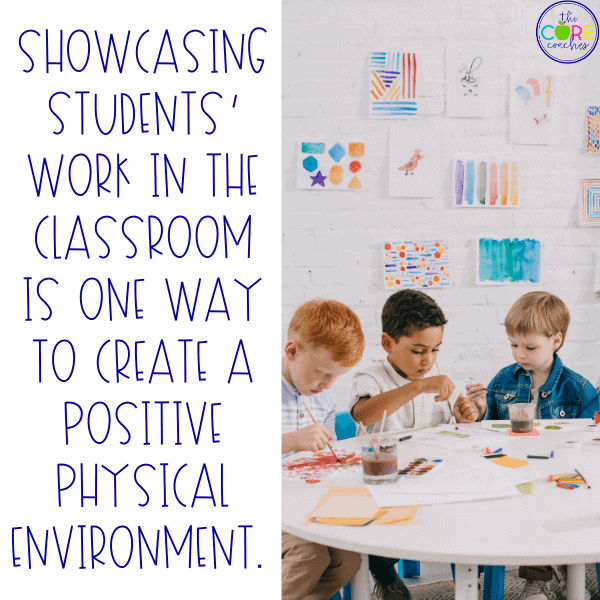
Classroom preparation can be viewed from two different perspectives: how you as the teacher prepare the classroom, and how your students come prepared to learn in the classroom. Classroom preparation from the teacher perspective ranges from the physical environment to the actual teaching.
Preparation of the physical environment includes things like seating charts & where a teacher chooses to place supplies, turn-in baskets, etc. Many of this preparation coincides with routines & procedures. You want to plan for effective traffic patterns within your classroom. Anticipating the most effective way to manage students moving about the classroom.
Beyond the physical environment, the most important way a teacher prepares is through their lessons. Having a clear lesson prepared for each day is paramount to successful classroom management. This includes the academic information as well as engagement. Student engagement is an important part to consider when preparing a lesson.The more students are engaged, the less formal management; thus, automatically creating classroom management through engagement.
Now, we have all been teachers and we know that creating an engaging lesson plan is just not in the cards some days! Therefore, we have found that having a few engaging “go to” lessons are really helpful! Having a set of read-alouds or math sheets that you save for those rainy days, will help you still be prepared.
When discussing classroom preparation for students, the focus lies in student accountability.
Student Accountability
Student accountability and ownership is a must to consider when discussing “what is classroom management?” One of the easiest ways to give students accountability is to establish clear expectations for coming to class prepared. Most teachers provide these expectations at the beginning of the year when they handout their class list of supplies.
How often do you come back to these expectations though? Remember, first and second grade students are still developing accountability; therefore, they may need several reminders! Simple reminders like a daily checklist to keep at home, or in their binder, can be helpful. This provides students support in developing their accountability for classroom preparation. Creating accountability in this seemingly small ways helps establish accountability in behavior & learning, both of which are important to classroom management.
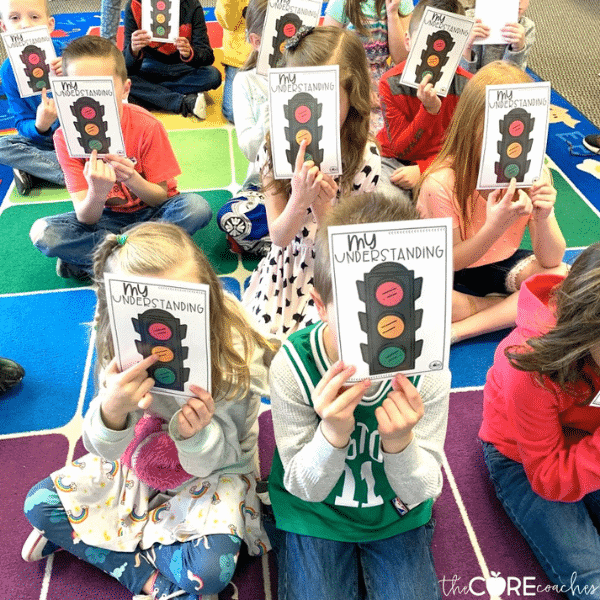
Furthermore accountability, we as The Core Coaches found that student ownership is also significant when it comes to classroom management. Student ownership goes back to building a classroom community. When building your classroom community, involve the students in that creation. One way to do this is to have students help decorate the room. We liked to do this by including our students’ work on our bulletin boards.
Another way to allow for student ownership is in developing a behavior management system, yes, even including classroom rules.
BEHAVIOR MANAGEMENT SYSTEMS
Let’s say you have done everything to manage your classroom through creating a positive classroom community. You are using students’ names, providing clear expectations through routines & procedures, establishing student accountability, yet you STILL have some students that just aren’t quite meeting the expectations.
Guess what? It happens! So, while the majority of the time using all of the pieces above will eliminate the need for formal management through rules, you still want to have them. You also want to have a clear system of what to do when rules are followed or not followed.
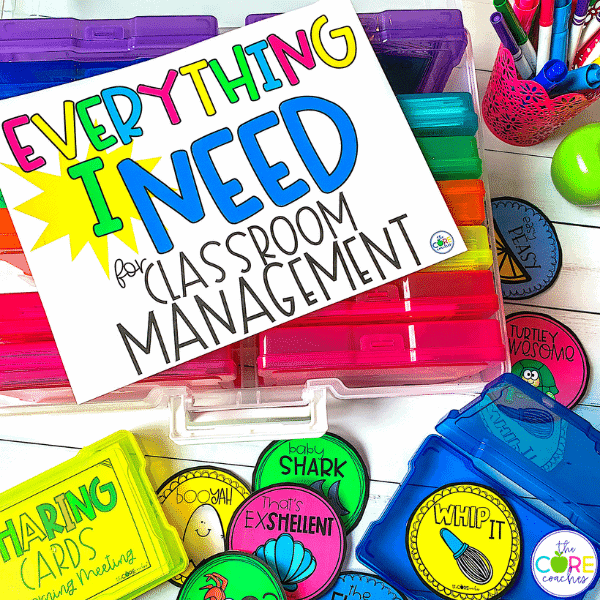
Enter… a behavior management system! A behavior management system is essentially the outcome for following or not following the rules.This usually includes a reward and or consequence system. We encourage you to create both!
Many schools have school wide behavior management systems, such as PBIS. However, whenever it is possible, we encourage having students help in creating a management system. Yes, this includes having students help with creating the classroom rules as well.
Including students in the discussion on rules and rewards & consequences goes back to the initial concept of building a classroom community. It gives them a voice in their learning community. This creates ownership, which helps reinforce student accountability. All of which will likely eliminate a constant need for reminding students of rules, and issuing consequences – meaning, you have a well managed classroom.
Digital Learning & Mindfulness
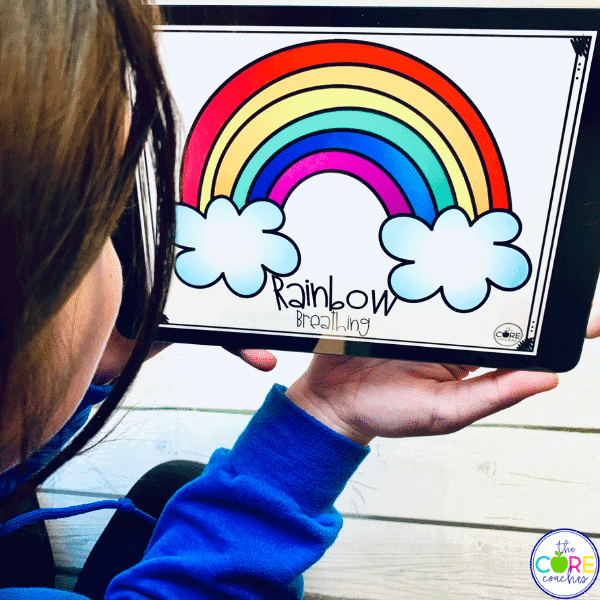
All of these are parts of classroom management. These are the core pieces that regardless of what changes in teaching, we truly believe are the core of managing a classroom effectively. It doesn’t mean that we don’t also address changes. Part of effective teaching and classroom management is staying up to date with new practices.
Online learning & social and emotional learning are two new elements of education that are important to consider with regards to classroom management. While you may not teach full classes online, the world is continually becoming more digital based. Therefore, it is important to establish digital elements in your classroom. One way to approach classroom management in the digital world is to consider routines & procedures for completing work online.
In addition to academics, awareness of students’ social and emotional well-being is becoming more prevalent for educators. Returning to the core foundation of classroom management: creating a classroom community, social and emotional learning is essential. Oftentimes, if a student is acting out in class it is due to an outside factor. Stress at home, or in another area of their life, can greatly impact a student’s behavior in class. Therefore, learning to implement mindfulness practices in your classroom can help with classroom management from a social and emotional perspective.
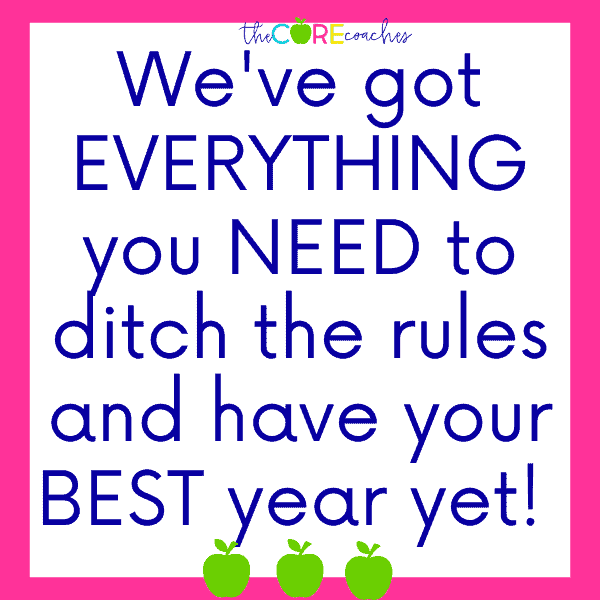
Creating a Classroom Management Plan
“What is classroom management?” is not one simple answer, or one simple practice. If you take all of these pieces into consideration though, you will have a classroom that simply manages itself. So, when you begin to take the next step in creating a classroom plan, remember that it begins with creating a classroom community.
Quick Tip: Quickly group students in pairs with these fun food grouping cards
Classroom Management Activities Ideas
As you know, our goal is to make teachers lives’ slightly more easy. That’s why, we’re summing this article up with ideas for how to incorporate the 6 key classroom management topics into your plan and how to execute it. In addition to the 6 classroom management sub-topics, are ideas and downloadable resources. Buy or steal our ideas! Also, if you’re searching for a ‘How To Guide: Create a Classroom Management Plan‘
- Classroom routines and procedures – Help Students learn what classroom managment and procedures are with adorable writing activity and learning exercise.
- Classroom Preparation with Back-to-School Night Stations. Kick off back to school ideas with our Back to School Night Stations. These are editable stations and activities are designed to make your back-to-school night, meet-the-teacher day, and/or open house events a breeze. Use stations/activities to help students and their families get to know you and your classroom, and vice versa.
- Student accountability. Our little ones, love being accountable. It makes them feel grown up. Giving young Elementary students accountability exercises is proven to be a motivating factor throughout the students life. Checkout some of our amazing products such as growth mindset bulletin board, student accountability bundle,
- Positive relationships. Positive relationships are key! As the teacher, you can help facilitate those with Getting to Know You Activities such as name activities, back to school writing, and more!
- Yes, even rules and Behavior management systems. All of these are important parts of effective classroom management. And don’t forget to stay up-to-date with new practices and aim to support effective classroom management. Mindfulness practices is a good example of these new practices.


